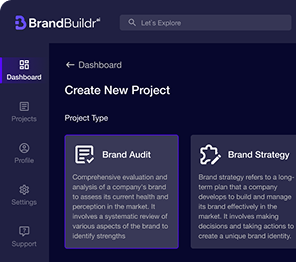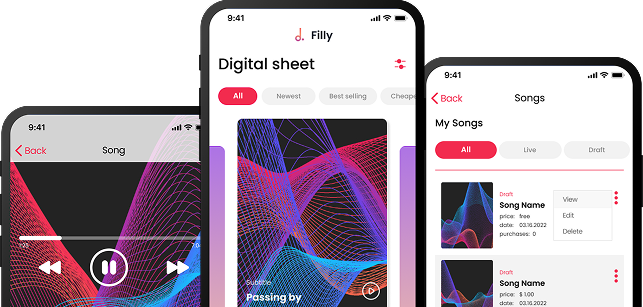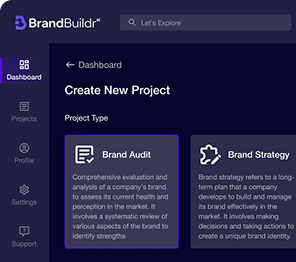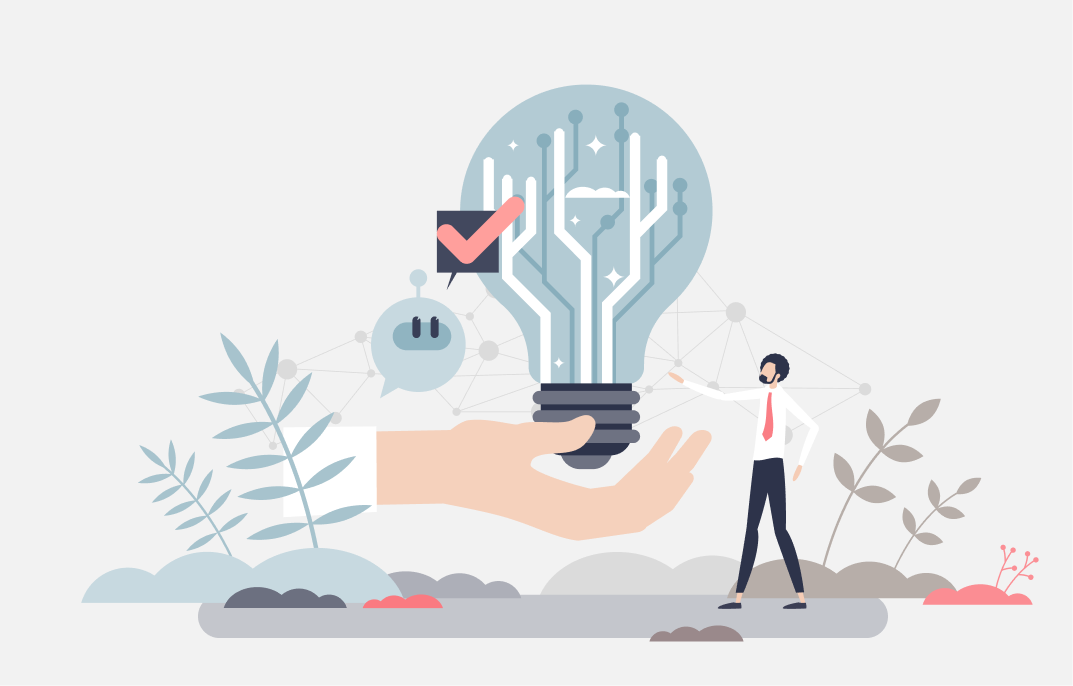In the contemporary digital landscape, where software products proliferate across industries, creating an outstanding user experience (UX) and user interface (UI) design has become a cornerstone of success. Effective UX/UI design goes beyond aesthetics; it profoundly influences user satisfaction, retention, and overall business success. This article explores the critical role of UX/UI design in building successful software products, emphasizing key principles, best practices, and the impact on user engagement and business outcomes.

Understanding UX/UI Design
Defining UX Design
User Experience (UX) design encompasses all aspects of the end-users' interaction with a company, its services, and its products. It focuses on enhancing user satisfaction by improving the usability, accessibility, and pleasure provided in the interaction with the product. UX design is about creating meaningful and relevant experiences for users, which involves understanding their needs, behaviors, and pain points.
Defining UI Design
User Interface (UI) design refers to the design of the interface of software products, focusing on the look and feel, visual design, and interactive elements. UI design aims to create visually appealing interfaces that are intuitive and easy to navigate. It includes everything from buttons and icons to typography, color schemes, and layout.
The Intersection of UX and UI
While UX and UI are distinct disciplines, they are interdependent. UX design lays the foundation for a product's functionality and overall experience, while UI design brings this functionality to life with visually engaging and interactive elements. Together, they create a seamless and enjoyable user experience.
The Importance of UX/UI Design in Software Products
1. Enhancing User Satisfaction
A well-designed UX/UI significantly enhances user satisfaction by providing a smooth and enjoyable interaction with the product. When users find software intuitive, easy to use, and visually appealing, they are more likely to have a positive experience. Satisfied users are more inclined to continue using the product, recommend it to others, and become loyal customers.
2. Improving Usability and Accessibility
Usability and accessibility are crucial components of UX design. Usability ensures that the product is efficient, effective, and satisfying to use, while accessibility ensures that it is usable by people with diverse abilities and disabilities. By prioritizing usability and accessibility, UX/UI design makes software products more inclusive and user-friendly, broadening their reach and impact.
3. Driving User Engagement and Retention
Effective UX/UI design plays a vital role in driving user engagement and retention. Engaging interfaces, intuitive navigation, and seamless interactions keep users invested in the product. Additionally, a positive user experience encourages users to return, reducing churn rates and increasing long-term user retention.
4. Building Brand Loyalty and Trust
A consistent and well-crafted UX/UI design reflects positively on a brand, building trust and loyalty among users. When users have a positive experience with a product, they associate that experience with the brand, leading to increased brand loyalty. Trustworthy and reliable software products foster a strong emotional connection with users, making them more likely to choose the brand over competitors.
5. Enhancing Competitive Advantage
In a competitive market, outstanding UX/UI design can be a significant differentiator. Products with superior design stand out, attract more users, and gain a competitive edge. Companies that invest in UX/UI design can better understand user needs, anticipate trends, and create innovative solutions that set them apart from competitors.
Key Principles of UX/UI Design
1. User-Centered Design
User-centered design (UCD) is a fundamental principle of UX/UI design. It involves designing products with the end-users in mind, ensuring that their needs, preferences, and limitations are considered at every stage of the design process. UCD requires thorough user research, including surveys, interviews, and usability testing, to gather insights and create designs that resonate with users.
2. Consistency and Predictability
Consistency and predictability are essential for creating a coherent and intuitive user experience. Consistent design elements, such as buttons, icons, and navigation patterns, help users understand how to interact with the product. Predictable interactions and feedback mechanisms reduce cognitive load and make the product more user-friendly.
3. Simplicity and Clarity
Simplicity and clarity are key to effective UX/UI design. Simple and clear interfaces reduce confusion and make it easier for users to accomplish tasks. Designers should prioritize essential features, eliminate unnecessary elements, and use straightforward language to enhance user understanding and efficiency.
4. Visual Hierarchy
Visual hierarchy guides users' attention and helps them navigate the interface effortlessly. By organizing elements based on their importance, designers can create a clear path for users to follow. Techniques such as contrast, spacing, and typography can be used to establish a visual hierarchy that enhances usability and user experience.
5. Responsiveness and Adaptability
In today's multi-device world, software products must be responsive and adaptable to different screen sizes and resolutions. Responsive design ensures that the product functions seamlessly across various devices, from desktops to smartphones. Adaptability involves considering different user contexts and designing for diverse user needs and environments.
6. Feedback and Interaction
Providing feedback and interaction cues is crucial for a positive user experience. Users should receive immediate feedback on their actions, whether it's a button click, form submission, or error message. Interactive elements, such as animations and transitions, can enhance the sense of responsiveness and engagement.

Best Practices in UX/UI Design
1. Conducting Thorough User Research
User research is the foundation of effective UX/UI design. By understanding users' needs, behaviors, and pain points, designers can create solutions that address real problems. Methods such as surveys, interviews, focus groups, and usability testing provide valuable insights that inform the design process.
2. Creating User Personas
User personas are fictional representations of target users, based on user research. Personas help designers empathize with users and keep their needs at the forefront of the design process. Each persona represents a specific user group with distinct characteristics, goals, and challenges, guiding design decisions and prioritization.
3. Implementing Wireframes and Prototypes
Wireframes and prototypes are essential tools in UX/UI design. Wireframes provide a visual blueprint of the product's structure and layout, while prototypes offer interactive simulations of the final product. These tools allow designers to iterate on design concepts, gather feedback, and refine the user experience before development begins.
4. Conducting Usability Testing
Usability testing involves observing users as they interact with the product to identify usability issues and gather feedback. Testing can be conducted at various stages of the design process, from early wireframes to high-fidelity prototypes. Insights gained from usability testing help designers make informed decisions and improve the overall user experience.
5. Prioritizing Accessibility
Designing for accessibility ensures that software products are usable by people with diverse abilities and disabilities. Accessibility considerations include providing alternative text for images, ensuring sufficient color contrast, enabling keyboard navigation, and supporting screen readers. Prioritizing accessibility not only expands the user base but also demonstrates a commitment to inclusivity and social responsibility.
6. Iterative Design and Continuous Improvement
UX/UI design is an iterative process that involves continuous improvement based on user feedback and evolving needs. Designers should embrace a mindset of constant learning and refinement, regularly updating and enhancing the product to meet users' expectations and stay ahead of industry trends.
The Impact of UX/UI Design on Business Success
1. Increased User Adoption and Retention
Effective UX/UI design significantly impacts user adoption and retention rates. When users have a positive experience with a product, they are more likely to continue using it and recommend it to others. High user retention rates contribute to long-term business success and revenue growth.
2. Reduced Development Costs
Investing in UX/UI design early in the development process can reduce overall development costs. Identifying and addressing usability issues and design flaws before development begins minimizes the need for costly revisions and rework. A well-designed product is more likely to be developed efficiently and within budget.
3. Enhanced Customer Satisfaction and Loyalty
A seamless and enjoyable user experience leads to higher customer satisfaction and loyalty. Satisfied customers are more likely to become repeat buyers, provide positive reviews, and advocate for the product. Building strong customer relationships through exceptional UX/UI design fosters long-term brand loyalty and trust.
4. Improved Brand Perception
UX/UI design plays a significant role in shaping brand perception. A visually appealing and user-friendly product enhances the brand's image and reputation. Companies that prioritize UX/UI design are seen as innovative, customer-centric, and trustworthy, which can positively influence market positioning and competitiveness.
5. Increased Revenue and Profitability
Ultimately, effective UX/UI design contributes to increased revenue and profitability. Higher user adoption, retention, and customer satisfaction translate into more sales, subscriptions, and in-app purchases. By delivering a superior user experience, companies can drive business growth and achieve financial success.
Effective UX/UI design goes beyond aesthetics; it profoundly influences user satisfaction, retention, and overall business success, making it a cornerstone of successful software products.

Conclusion
The role of UX/UI design in building successful software products cannot be overstated. By prioritizing user satisfaction, usability, accessibility, and visual appeal, UX/UI design enhances the overall user experience and drives business success. From understanding user needs through research to creating intuitive and visually engaging interfaces, UX/UI design is a critical factor in differentiating products in a competitive market. Companies that invest in UX/UI design are well-positioned to create exceptional software products that resonate with users, build brand loyalty, and achieve long-term success.
Heading 1
Heading 2
Heading 3
Heading 4
Heading 5
Heading 6
Lorem ipsum dolor sit amet, consectetur adipiscing elit, sed do eiusmod tempor incididunt ut labore et dolore magna aliqua. Ut enim ad minim veniam, quis nostrud exercitation ullamco laboris nisi ut aliquip ex ea commodo consequat. Duis aute irure dolor in reprehenderit in voluptate velit esse cillum dolore eu fugiat nulla pariatur.
Block quote
Ordered list
- Item 1
- Item 2
- Item 3
Unordered list
- Item A
- Item B
- Item C
Bold text
Emphasis
Superscript
Subscript





















.avif)



.avif)

.avif)


